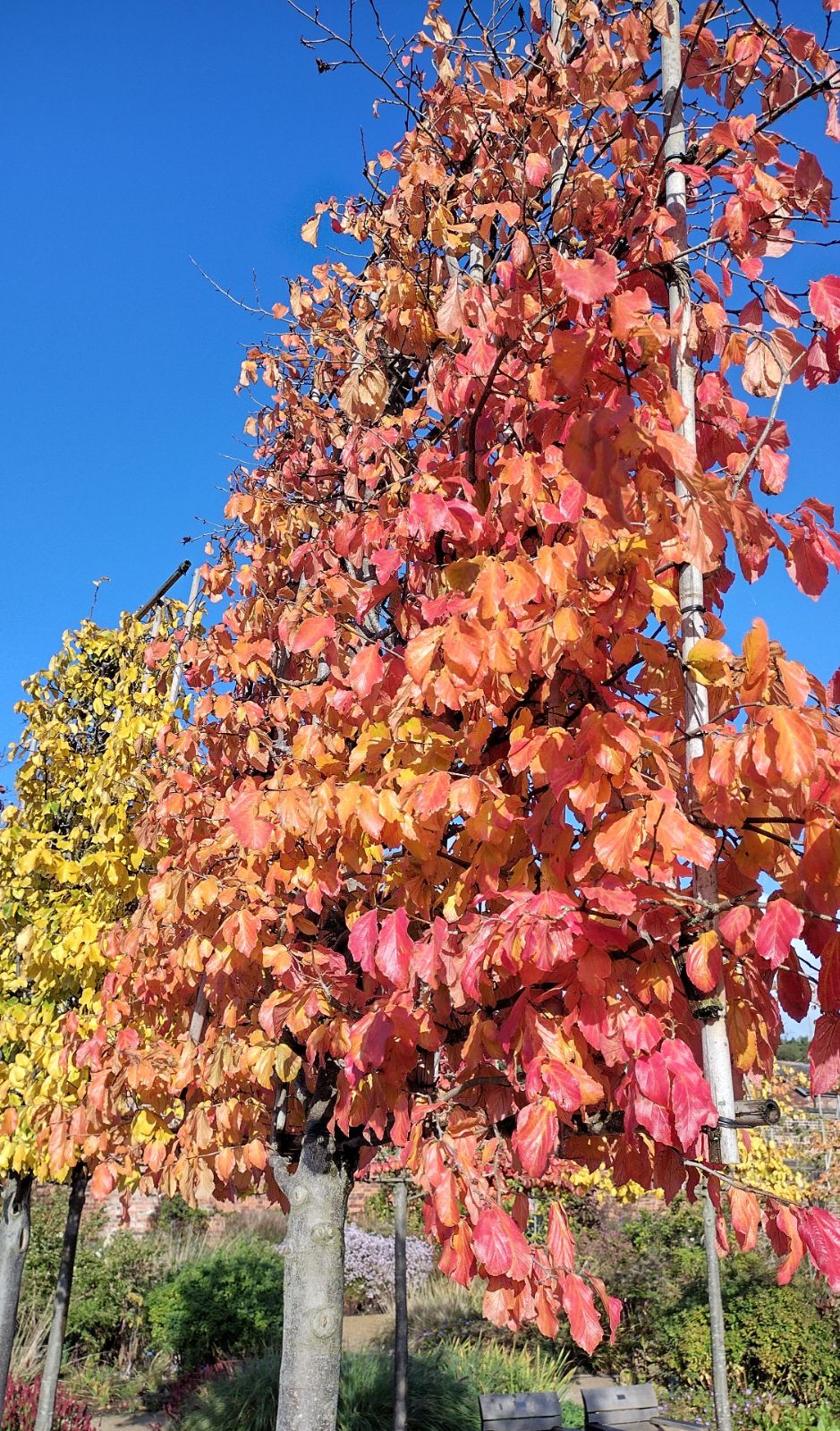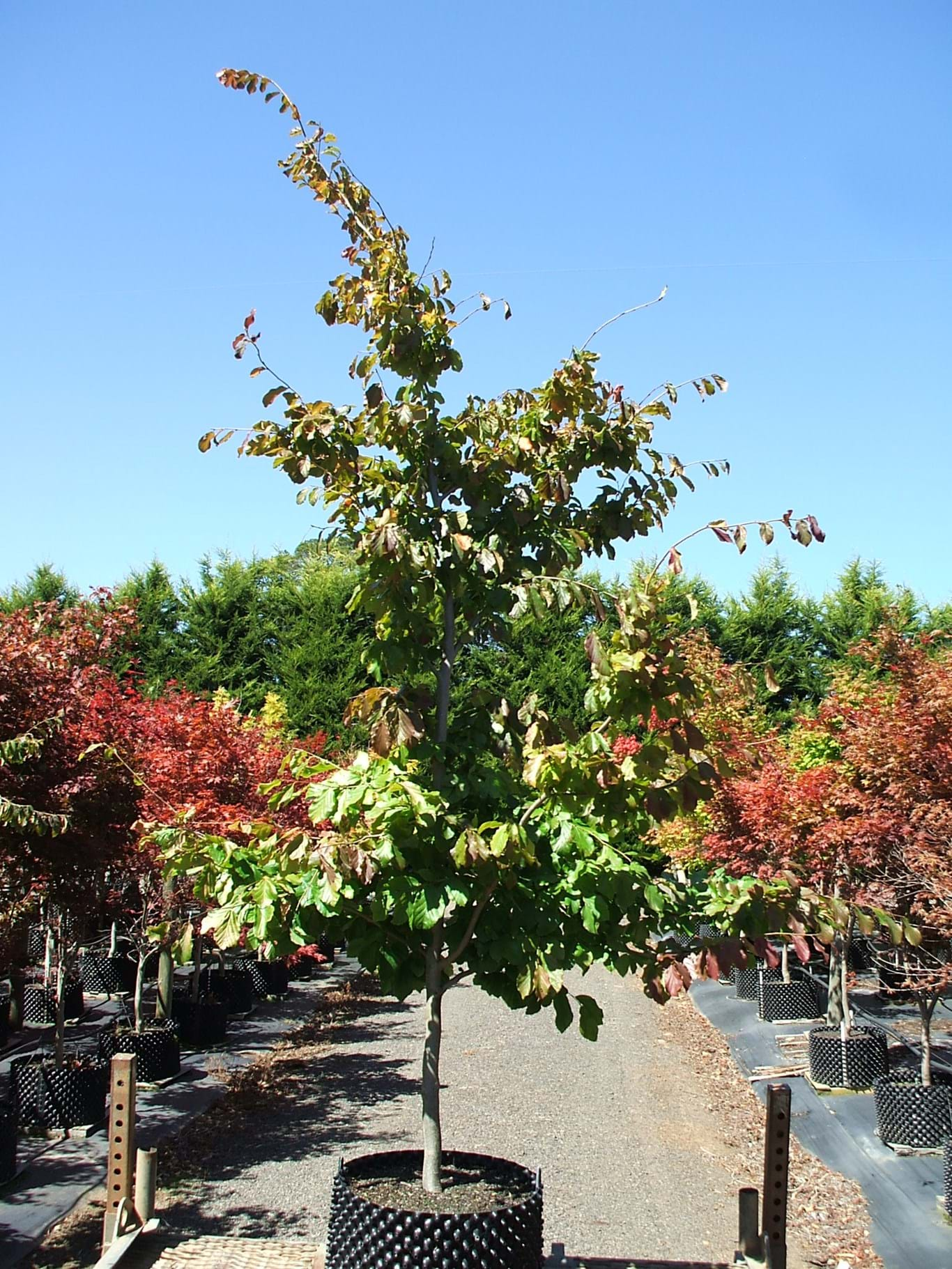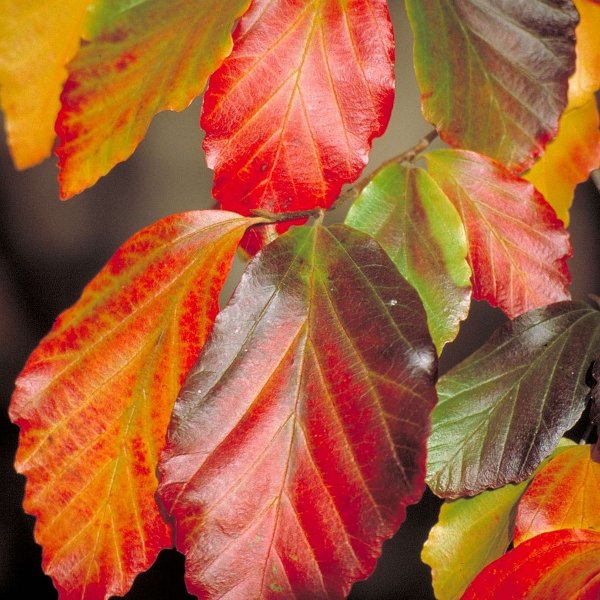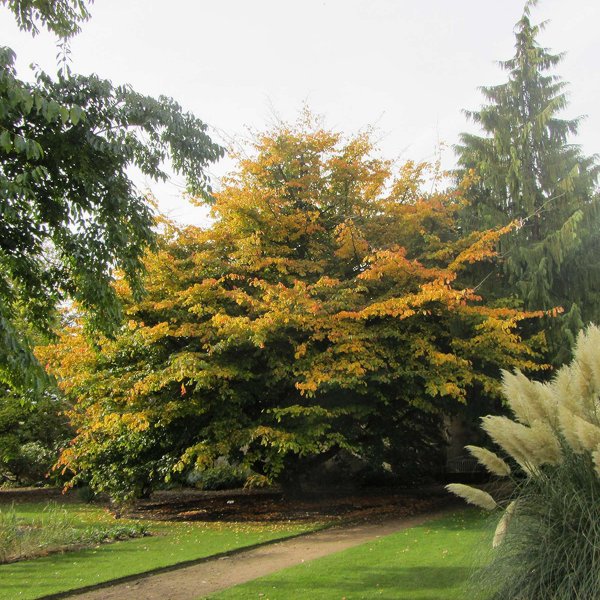
Parrotia persica Trees and Shrubs Online
Persian Ironwood The Persian ironwood ( Parrotia persica) was thought to be the only member of its genus until Chinese ironwood ( Parrotia subaequalis) was identified as a sibling species in 1992. The layered canopy of our oldest Persian ironwood ( Parrotia persica) shimmers as leaves dance in the wind, mimicking clusters of defocused lights.

1 oz Seeds (Approx 567 Seeds) of Parrotia persica, Persian Parrotia, Persian
Parrotia persica, the Persian ironwood, is a deciduous tree in the family Hamamelidaceae, closely related to the witch-hazel genus Hamamelis.It is native to Iran's Caspian region (where it is called انجیلی anjili) and Iranian Azerbaijan (where it is called Dəmirağacı).It is endemic in the Alborz mountains, where it is found mainly in Golestan National Park.

Parrotia persicaPERSIAN WITCHHAZEL
Parrotia persica 'Vanessa': An In-depth Look. Native: The species is native to the forests of Northern Iran and the Caucasus, but the 'Vanessa' cultivar was selectively bred for specific features, making it a popular choice in gardens around the world. Plant Type and Habit: This deciduous tree has an upright, columnar growth habit that.

Persian Ironwood Tree parrotia Persica Seeds Etsy
Parrotia persica, or Persian ironwood, is a unique and beautiful winter-blooming specimen tree. Its unusual flowers emerge on leafless stems in late February and last for up to a month, providing valuable late-winter interest in the garden.

Parrotia persica Persian ironwood Van den Berk Nurseries
Persian Parrotia is best known for its fantastic pumpkin yellow fall foliage and red winter flowers which appear before the foliage appears. Also known as Persian Ironwood. This deciduous tree grows to a height of 40' and perhaps 25' wide forming a single or multi-stemmed trunk. However, the branches often grow to the ground hiding the.

Parrotia persica Persian ironwood Van den Berk Nurseries
Looking For Parrotia Persica Seeds? We Have Almost Everything On eBay. But Did You Check eBay? Check Out Parrotia Persica Seeds On eBay.

Persian ironwood (Parrotia persica) old seed pod close up February 2018 YouTube
Noteworthy Characteristics. Parrotia persica, commonly called Persian ironwood, is a small to medium sized, single trunk, deciduous tree eventually growing 20-40' tall (but typically 10' after 7-8 years) or a large, multi-stemmed shrub growing to 15' tall.Apetalous flowers with dense, red stamens surrounded by brownish bracts appear in late winter to early spring before the foliage.

RP Seeds Parrotia persica (Persian Ironwood) 10 seeds £1.95
Broadleaf deciduous tree/shrub, 20-50 ft (6-15 m) high, rounded, upright, wide spreading branches, often with several trunks. Bark exfoliating, producing a mosaic of green, white and brown. Leaves alternate, simple, 6-12 cm long by 2.5-6 cm wide, oval to obovate-oblong, conspicuous stipules, coarsely crenate-dentate above the middle, undulate.

Parrotia persica (Persian Parrotia) North Carolina Extension Gardener Plant Toolbox
Fruit, cone, nut, and seed descriptions: The fruit is a small capsule which is not ornamentally important. Plant care: Persian ironwood is tolerant of a wide range of conditions. Prune after flowering in spring.. (Parrotia persica 'Inge's Ruby Vase'): A cultivar with a narrow-upright form, reaching 30 feet high by 15 feet wide. New.

Buy Persian Ironwood (Parrotia Persica) 5 seeds online Seeds HobbySeeds Store
Parrotia persica Persian ironwood P. persica is a wide-spreading, often multi-stemmed deciduous tree or large shrub to 8m, with attractive flaking bark. Leaves turn yellow, red and purple in autumn. Small crimson flowers on bare twigs Other common names iron tree ironwood Join the RHS today and save 25% Join now < > © RHS 1999 © visionspictures.com

Parrotia persica AGM Persian Ironwood The 3 Growbags
Parrotia persica, also known as Persian ironwood, is a deciduous tree mainly grown for its spectacular autumn display when its leaves turn shades of yellow, orange, red and purple. It's a wide-spreading, slow growing tree with bark that flakes away, creating an interesting texture and revealing younger bark below.

Buy Persian Ironwood (Parrotia Persica) 5 seeds online Seeds HobbySeeds Store
Info Synonym Hamamelis persica Parrotia siderodendron Sun Exposure Sun to Partial Shade Foliage Deciduous Height 20-30 ft. (6-9 m) Spacing 20-30 ft. (6-9 m) Hardiness USDA Zone 4a: to -34.4 °C (-30 °F) USDA Zone 4b: to -31.6 °C (-25 °F) USDA Zone 5a: to -28.8 °C (-20 °F) USDA Zone 5b: to -26.1 °C (-15 °F) USDA Zone 6a: to -23.3 °C (-10 °F)

Parrotia persica Persian ironwood Van den Berk Nurseries
Parrotia persica (Ironwood) seeds £2.45 GBP Tax included. Shipping calculated at checkout. Quantity Add to cart Deciduous, short-trunked small tree with many interesting features. Its grey and fawn coloured bark is flaky and the foliage is rich green turning yellow, orange and red-purple in autumn. A real spectrum of autumn colours on one tree!

Parrotia persica (Iron Tree, Ironwood, Persian Ironwood, Persian Parrotia) North Carolina
Description The Persian ironwood is small to a medium-sized, slow-growing, deciduous tree that grows up to 15 to 30 feet in height and is equally as wide. It has a rounded, upright habit with spreading branches, and will often have several trunks. It may also be grown as a large multi-stemmed shrub that reaches 15 feet in height.

Parrotia persica Persian ironwood Van den Berk Nurseries
The Persian ironwood (Parrotia persica) fills a valley near Lerik, Azerbaijan. When the authors first encountered this overlook in 2017, the diversity of fall color and form was unmistakable. This photo was taken on a return trip in 2019. Phillip Douglas by Phillip Douglas and Henrik Sjöman on Jun 18, 2021

Parrotia persica Persian ironwood Van den Berk Nurseries
The flowers are more of a curiosity than a showy attribute and are followed by wooly chocolate-brown seed capsules.. The apetalous flowers are comprised of one-half inch wide clusters of straplike stamens cupped by fuzzy brown bracts.. Dirr, M. A. 2012. "Parrotia persica: Every Garden has a Niche for Persian Ironwood". Nursery Management.